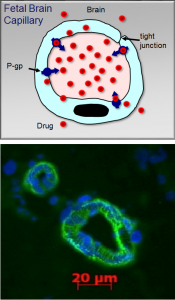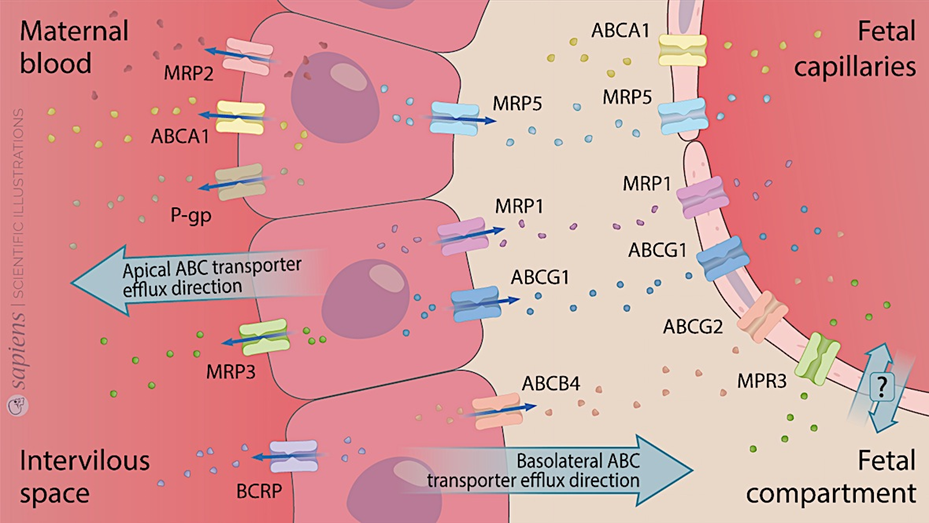Role of Drug Resistance Proteins in Pregnancy: Fetal Protection

A group of drug transporters in the ATP binding cassette (ABC) superfamily have recently been discovered in the placenta and fetal blood brain barrier. These include the multidrug resistance P-glycoprotein (P-gp) and breast cancer resistance protein (BCRP). These proteins are important in protecting the fetus and the fetal brain from a large number of drugs and toxins. P-gp and BCRP are also involved in the transport of endogenous (or natural) factors including certain hormones (glucocorticoids) and nutrients (folate). As such, they may play an important role in regulating access of endogenous factors in the maternal circulation to the fetus, in normal development. Studies in human placenta and the mouse are being carried out to define the expression and regulation of P-gp and BCRP. We have recently shown the there is a marked decrease in the levels of P-gp in the human and mouse placenta with advancing gestation. Very interestingly, as placental protection of the fetus by P-gp decreases in late gestation, there is a corresponding increase in P-gp expression in the developing blood-brain barrier. P-gp and BCRP in the blood-brain barrier are critical for protecting the brain against entry of drugs and toxic factors that are present in the circulation. Up-regulation of P-gp expression in the brain in late gestation indicates maturation of the blood-brain barrier which becomes critical after birth (when the placenta can no longer provide protection). In a series of studies we have investigated the molecular mechanisms that regulate changes in drug resistance in the placenta and fetal blood brain-barrier. We have also identified novel factors that can potently modify normal drug resistance. By understanding the regulation of drug resistance during normal development we will be in a position to create interventions that can either increase or decrease sensitivity of the fetus to specific drugs. This is important when the fetus or the mother is the intended target for the therapeutic drug being administered. These studies will also help to increase our fundamental understanding of drug resistance in the blood-brain barrier after birth.

